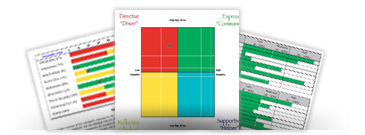Sales Forecasting: How to Go From Wishful Thinking to Stellar Results
Sales forecasting is a vital planning tool for any organization. Despite this, many sales managers and their salespeople dread this activity. It might be seen as a waste of time or, worse, a potential threat to one’s employment if projections are way off base when compared with actual results.
So, how does one turn sales forecasting from a chore to a real driver of growth? One important point is to make sure you are predicting based on the right metrics – ones which can actually be directly influenced by salespeople and their managers.
Measure Actions, Not Guesses
The key to how to develop a sales forecast that truly works is in measuring actual ACTIONS, rather than reporting mere opinions or guesses.
Matthew Bellows, founder of Yesware, states in an article in the Harvard Business Review, “We have to start caring more about sales activities, the specific actions that salespeople and sales teams perform to close more business. We need to know how many phone calls, emails, demos and visits it takes for our teams to close a deal… Let’s build the processes, the services and the tools we need to collect data instead of opinions. Let’s learn to build forecasts based on what we do instead of what we say.”
Rather than simply go over the number of deals in the pipeline and guessing at which ones will close this month, a far better prognosticator of future revenue is whether the “minor” sales actions are increasing or decreasing based on historical data.
- If a sales team averages 1000 phone calls and 100 presentations in a month, which result in an average of 10 sales, you can make a pretty educated guess at what the results will be should your team expand its ranks to make 2000 calls and 200 presentations (assuming operations can handle all the new business).
- If the data from a CRM show an average of 30 emails to close a deal with each customer, yet this month the average number of emails sent has dropped to 5, you can surely predict a drop in closed deals.
Should there be a dramatic increase or decrease in sales figures, these metrics allow you to spot the change which likely caused it, allowing you to either reverse the change or to reinforce it if it caused an upswing. For example:
- Revenue is down by 25 percent for the quarter. Manager looks back a few months, sees that the number of handwritten prospecting letters sent by her team has dwindled to near zero, but that while these letters were going out, income was good. She can reasonably assume that this change was for the worse, and can forecast sales to return to previous levels once the letter campaign is running again.
Sales managers learning how to develop a sales forecast should keep this in mind: actions are tangible and can be pushed in order to increase production. You cannot push for more guesses and get much improvement, but you can certainly push for more calls, appointments, visits, and through these, forecast more dollars in your pocket.



